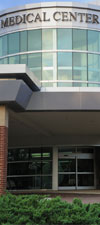What are the top 5 mistakes for healthcare facility staff? And more importantly, from a risk management perspective, what are some steps that can be taken to decrease the risks associated with human error?
Mistake #1
Poor care coordination with patient’s next phase of care
A communication breakdown can occur at the following patient handoff points:
- Nursing shift changes
- Nursing staff to physicians
- ICU to lower levels of care
- Specialists to continued care team
- Facility to facility
Systems and tools that facilities may use to track patient handoff should be put in place and implemented. Is there protocol is in place to ensure implementation? Proper and thorough communication is essential for prevention of complications, such as patient falls – as well as ongoing monitoring of protocol implementation.
Mistake #2
Test results reporting errors
Timely and accurate medical test results are not only essential, they can be a life and death matter. Here’s an example – A patient checks in with chest pain, dizziness and shortness of breath. If results are positive for heart attack, there’s a narrow window of time in which medication can be administered. How does the hospital staff ensure that test results aren’t being lost in the shuffle? A system of checks and balances must be in place that supports the physician in seeing the results and acting quickly and accordingly based on the findings.
Mistake #3
Retained surgical objects
Surgical tools left inside the body during a procedure, then not discovered until a complication arises, causes the need for a second unnecessary procedure. Understandably, this concern often comes as an unpleasant surprise to the public. How is this avoided? It comes down to diligent checks and balances on behalf of the entire surgical team along with implemented protocols that involve counting, checking and double checking the tool and equipment count.
Many contributing factors lead to falls – and these can be boiled down to the patient not having called for help. This applies to patients of all ages, not just the elderly. There are many reasons they may not have asked for help:
- Not wanting to be a bother, appear helpless or needy
- Unaware of their loss of muscle strength due to bed rest
- Unaware of their mental state as a result of pain medication, sedatives, anesthesia, etc.
- Immediate bathroom needs
Prevention strategies include the incorporation of “falling education” into patient check-in, so that each patient is explained the importance of fall prevention before they find themselves in the moment of choosing whether to call for help. Integrating hourly check-ins for each and every patient into the nursing staff’s duties is another beneficial practice.
Mistake #5
Failure to adequately manage behavioral health patients in acute care settings
When hospital staff members have received basic violence prevention and de-escalation training, incidents can often be avoided before spiraling out of control, so that the neither the patient nor the employee gets injured. Solutions involve the implementation of staff training on basic violence prevention techniques. This can be accomplished with as little as a one-hour training session.
Bottom-Line: Communication is the link in each of these safety concerns. No one person can do, handle or prevent any of these occurrences. It requires teamwork, and a company culture that supports open communication, openness to trying new systems, and a commitment to constantly monitor the systems with ongoing quality checks in each of these areas. Also invaluable, is the formation of a risk management committee that meets regularly to monitor progress and make recommendations to improve safety.
Brokers, did you know Ultra has an exclusive program with binding authority for outpatient medical facilities? Learn more here: Ultra Health Express






